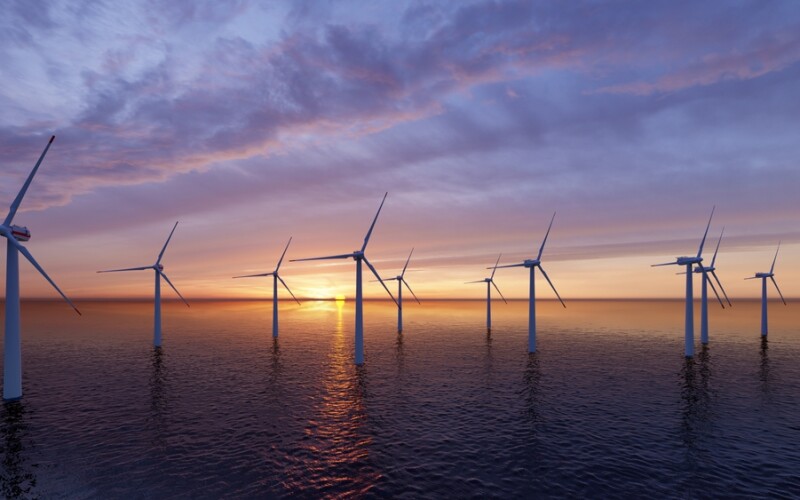The U.S. departments of Energy (DOE), Interior, Commerce, and Transportation released a report summarizing their progress toward the goals of the Floating Offshore Wind Shot, an interagency initiative to drive U.S. leadership in design, deployment, and manufacturing.
The report shows that, since the initiative's launch in September 2022, the Biden-Harris administration has dedicated over $950 million in planning, leasing actions, research, development, demonstration, deployment and more in an effort to realize the full potential of this renewable power source.
"The Biden-Harris administration is committed to unlocking the vast potential of floating offshore wind," Jeff Marootian, principal deputy assistant secretary for Energy Efficiency and Renewable Energy, said in a statement announcing the new report. "It's exciting to see this rapid progress advancing so many initiatives that support job growth, a stronger domestic supply chain, and more equitable, accessible, affordable clean energy across America."
About two-thirds of the U.S.'s offshore wind potential is in waters that are deep enough to make floating offshore wind turbines more practical and cost-effective than fixed-bottom turbines. Expanded floating offshore wind deployment would bring the benefits of clean power to millions of Americans, create thousands of jobs, and stimulate domestic manufacturing, interagency officials said.
The interagency Floating Offshore Wind Spot positions the U.S. as a leader in floating offshore wind and reduce the cost of floating offshore wind energy by more than 70% by 2035.
The Floating Offshore Wind Shot is part of DOE's Energy Earthshots Initiative, which drives major innovation breakthroughs in eight clean energy technology sectors critical to decarbonizing the American energy system and solving the climate crisis.
“Floating Offshore Wind Shot: Progress and Priorities” documents more than 50 achievements since the Floating Offshore Wind Shot was established. These include:
• The first floating offshore wind lease auction in California and the proposal of 10 new lease areas, two in Oregon and eight in the Gulf of Maine.
• A $426.7 million investment from the U.S. Department of Transportation in the first offshore wind terminal on the Pacific Coast.
• Expanded support for innovative, floating turbine designs from DOE's Advanced Research Projects Agency.
• Advances in planning for the transmission of power from floating offshore wind projects to West Coast communities.
• Monitoring the presence of bird, bat, and marine mammals in potential energy development areas.
The report also establishes a series of near-term priorities, developed in consultation with a range of stakeholders, that will accelerate progress toward the initiative's overarching goals. These goals include cost reduction through technology innovations, supply chain development, expanded deployment, transmission development, and co-generation opportunities for economywide decarbonization.
DOE also announced the five winners of Phase two of the FLoating Offshore Wind ReadINess Prize, a first-of-its-kind competition that incentivizes participants to solve the floating offshore wind industry’s most pressing supply chain challenges. Phase Two winners were selected for their progress in developing plans for mass manufacturing and deployment of their floating offshore wind energy substructure designs. Teams will receive $450,000 cash and $100,000 in vouchers for technical support and move on to the final phase of the prize competition.
The winning teams are: FloatHOME (Emeryville, Calif.); PelaStar (Seattle); Technip Energies(Houston); TETRA TRIPLE-ONE (Boston); and WHEEL-US (Coral Gables, Fla).
Offshore wind infrastructure exists in harsh, isolated ocean environments that present unique challenges for operating and maintaining turbines and systems. DOE released a roadmap assessing current practices and future challenges to the operation and maintenance of U.S. offshore wind farms. The roadmap also features specific recommendations for technology innovations that could help address the industry’s needs.
Last month, DOE announced its intent to issue $20 million in funding for projects that improve floating offshore wind systems through refinement and innovation in floating platform design, manufacturing, deployment, and integrated turbine/platform research. The funding opportunity will also offer $3.5 million for the establishment of a floating offshore wind Center of Excellence.




